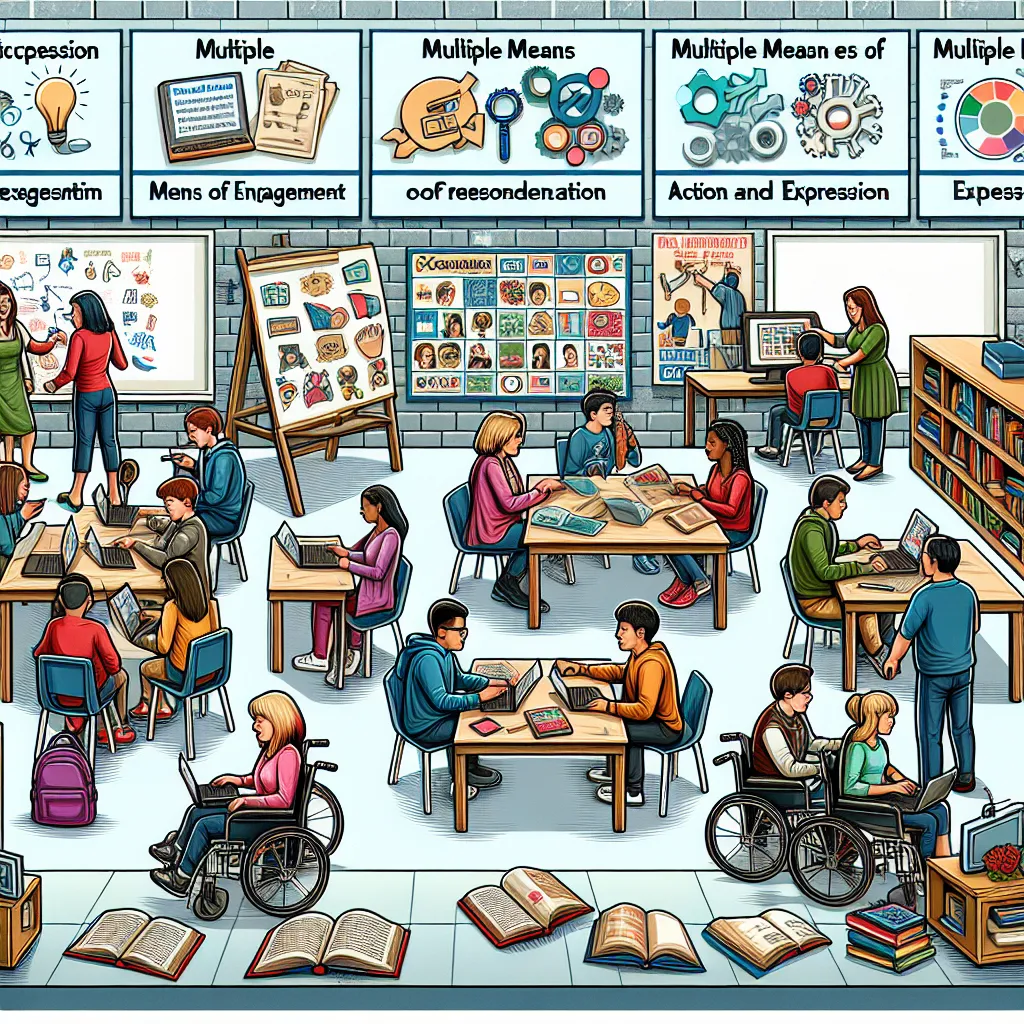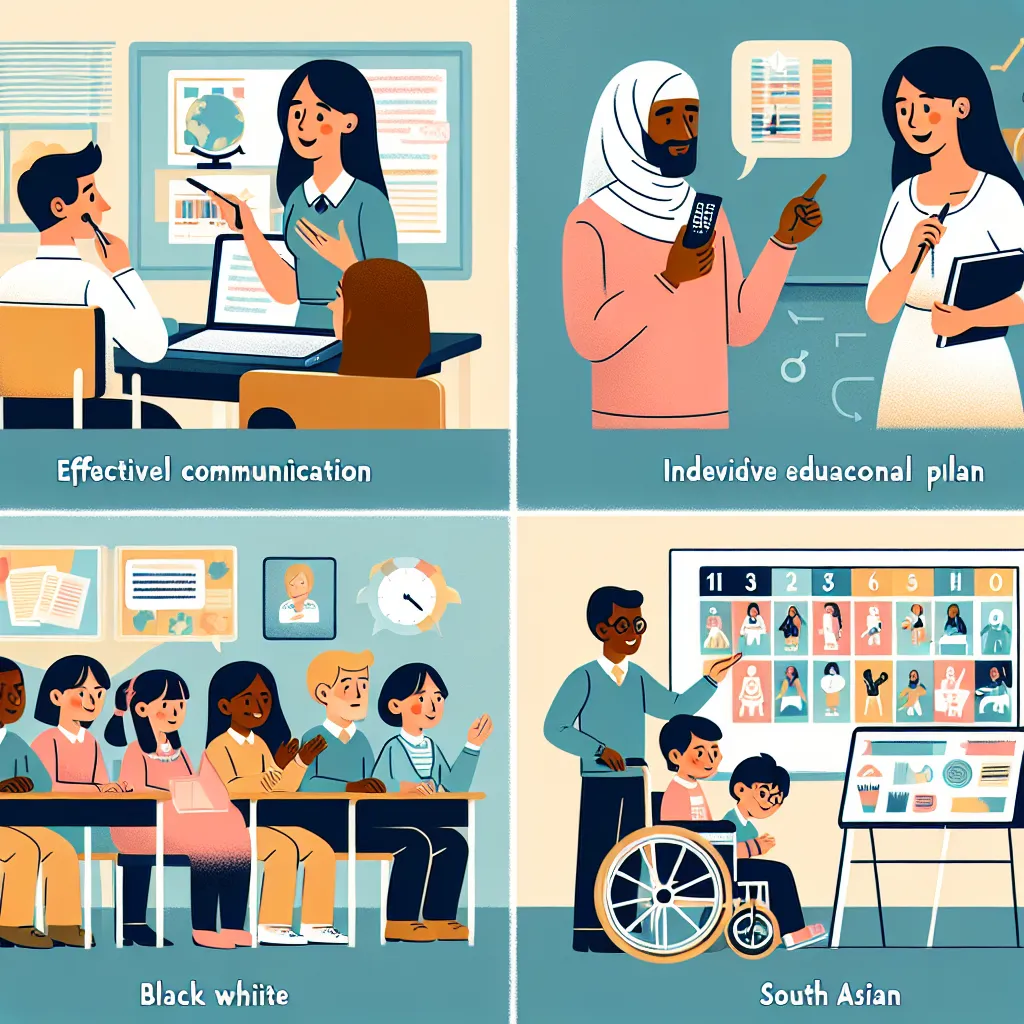Ask AI on The Internet
Question: Read the sections on Inclusive pedagogical approaches including Inclusive Pedagogical Approach in Action (IPAA) framework, developed by Florian and Spratt (2013) as well as Universal Design for Learning by Centre for Applied Special Technology (CAST) and answer the following questions. How would you implement the principles of Universal Design for Learning (UDL) in a classroom with diverse learners to ensure that all students are engaged and able to demonstrate their understanding? (15) Compare and contrast the Inclusive Pedagogical Approach in Action (IPAA) framework with Universal Design for Learning (UDL) principles. How do these approaches address the needs of diverse learners differently?
### Implementing Principles of Universal Design for Learning (UDL) in a Classroom Universal Design for Learning (UDL) is a framework developed by the Center for Applied Special Technology (CAST) with the aim of optimizing teaching and learning for all people based on scientific insights into how humans learn. The principles of UDL focus on providing multiple means of engagement, representation, action, and expression. #### 1. **Multiple Means of Engagement** - **Interest and Motivation**: Introduce varied ways to spark and sustain students' interest in learning. For instance, use gamified learning experiences, provide student choice in project topics, and connect lessons to real-world applications that hold personal relevance. - **Support for Effort and Persistence**: Implement strategies like scaffolding, collaborative learning groups, and regular feedback sessions to help students stay motivated and persistent in their learning endeavors. #### 2. **Multiple Means of Representation** - **Diverse Formats**: Present information in different formats such as text, audio, video, and interactive media. For instance, complement textbook readings with videos, infographics, and podcasts to cater to diverse learning preferences. - **Clarification and Understanding**: Provide alternatives for access to information, like glossaries, visual aids, and concept maps, to ensure understanding across all learners. #### 3. **Multiple Means of Action and Expression** - **Variety in Expression**: Allow students to demonstrate their understanding through different forms such as written reports, oral presentations, multimedia projects, and hands-on demonstrations. - **Support for Executive Functions**: Provide tools and resources for planning, organizing, and managing their learning tasks, such as graphic organizers, planning software, and checklists. ### Comparison of Inclusive Pedagogical Approach in Action (IPAA) Framework with UDL #### Commonalities: - **Flexibility and Accessibility**: Both frameworks emphasize adaptable teaching methods that cater to the learning preferences and needs of all students. - **Commitment to Diversity**: Both IPAA and UDL recognize the importance of inclusive education and aim to eliminate barriers to learning for all students, including those with disabilities. - **Evidence-Based Practices**: Each framework is rooted in research and aims to apply evidence-based practices to improve educational outcomes. #### Differences: - **Scope and Focus**: - **UDL**: Primarily focuses on how to design curricula that accommodate varied learners from the outset. It is a proactive approach that emphasizes planning and design. - **IPAA**: Concentrates on teaching practices and the dynamics within a classroom setting. It focuses on how to interact with learners and modify teaching in real-time to be more inclusive. - **Implementation**: - **UDL**: Offers a structured approach with specific checkpoints and guidelines for implementing the principles. It places strong emphasis on pre-planning of curriculum design. - **IPAA**: Encourages continuous reflection and adaptation by teachers based on day-to-day interactions and experiences within the classroom environment. - **Philosophical Underpinnings**: - **UDL**: Is rooted in the idea of universal access and proactive elimination of barriers, drawing significantly from the field of architecture and learning technologies. - **IPAA**: Stems from an educational perspective that emphasizes pedagogy and the responsive nature of teaching, focusing on the teacher-student relationship and interactions. #### Addressing Needs of Diverse Learners: - **UDL**: Addresses diversity by ensuring that course materials, instruction methods, and assessment techniques are accessible and effective for all learners. Adjustments are built into the curriculum design itself. - **IPAA**: Addresses diversity through responsive teaching practices that evolve based on the unique and emerging needs of the students within the classroom. Adjustments are made dynamically during the teaching process. In conclusion, while UDL and IPAA both aim to support diverse learners, their approach and focus differ. UDL is about designing learning experiences that are inherently accessible and engaging for all, whereas IPAA is about ongoing pedagogical adjustments to make daily classroom interactions more inclusive. Using both frameworks in tandem can provide a comprehensive strategy for addressing the diverse needs of learners effectively.
Think your answer is better than the AI's? Post it below.
Other Most Relevant Posts:
 # Tutorial Letter: Assignment 05 - Incl. Education Approaches (IEA1501)
# Declaration of Honesty
# Assignment 05 Questions
# Inclusive Pedagogical Approaches
# Teaching Strategies for Incl. E
# Tutorial Letter: Assignment 05 - Incl. Education Approaches (IEA1501)
# Declaration of Honesty
# Assignment 05 Questions
# Inclusive Pedagogical Approaches
# Teaching Strategies for Incl. E
Question Tags
If you want your question answered by an AI, click here.






Post your own comment: